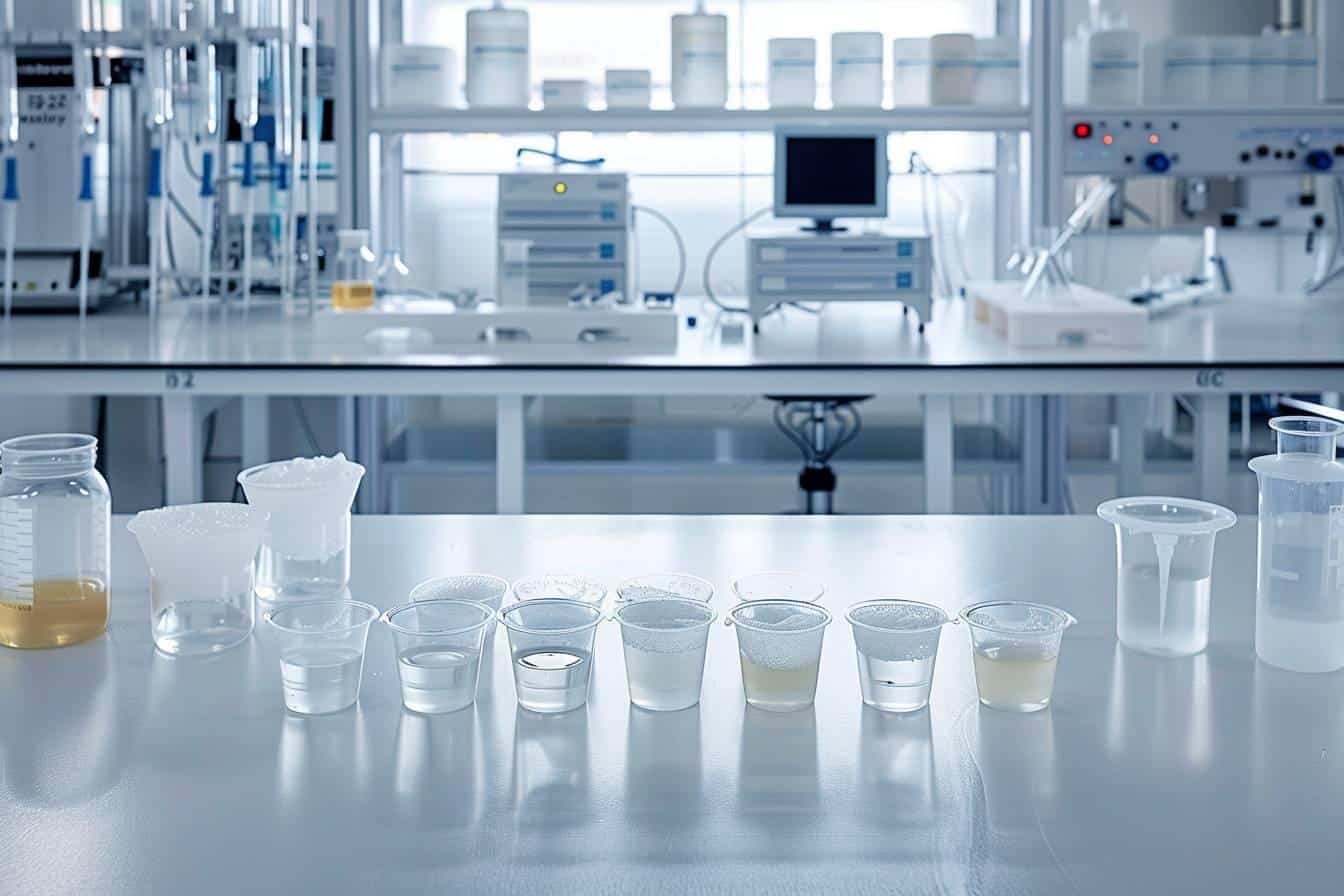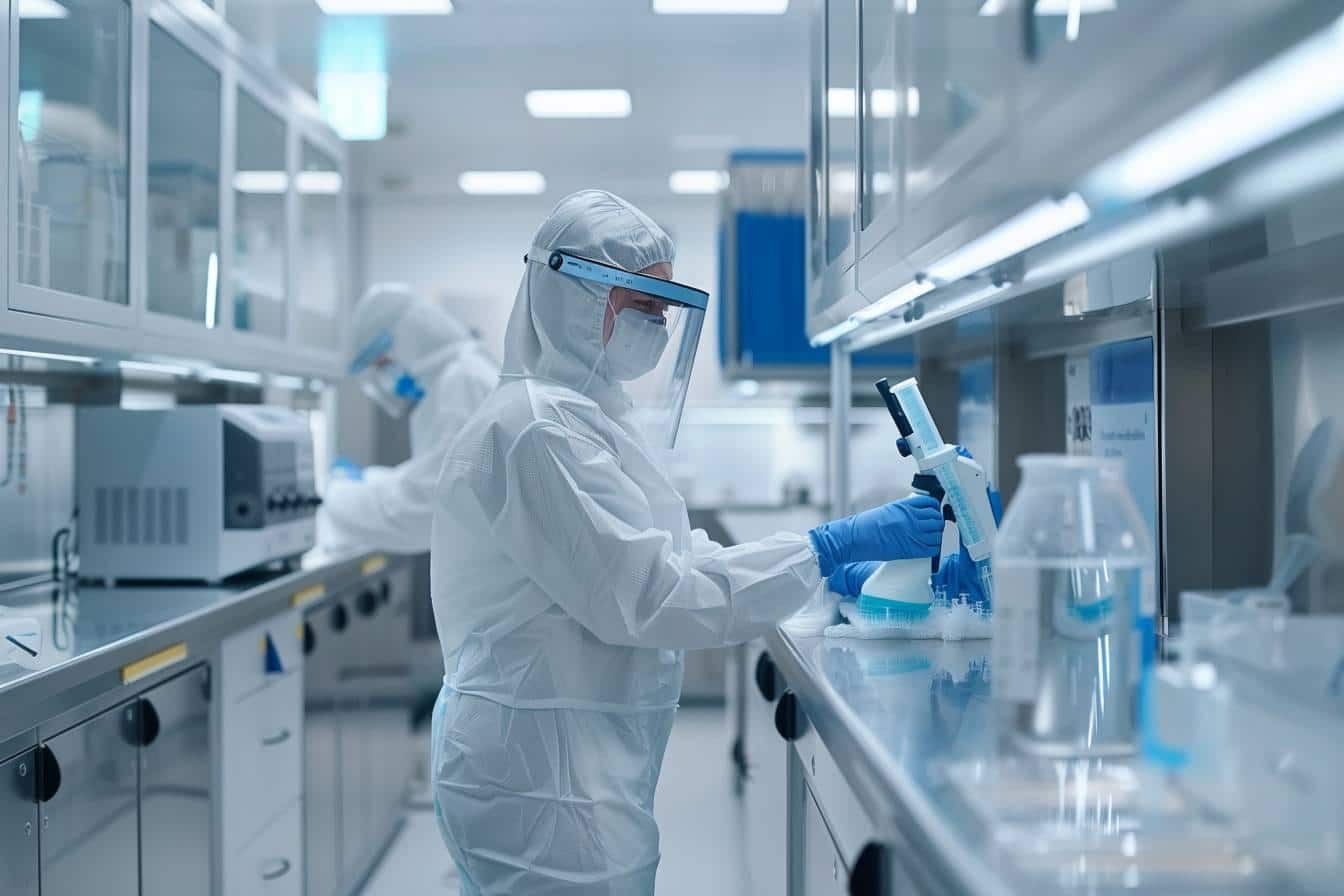Biocleaning, also known as biological cleaning or sanitization, is a crucial process in maintaining hygienic environments across various sectors. This comprehensive guide delves into the definition of biocleaning, its importance, and the most effective techniques used in the industry today.
Understanding biocleaning : A comprehensive definition
Biocleaning refers to the process of removing organic and inorganic contaminants from surfaces using specialized cleaning agents and techniques. This method goes beyond traditional cleaning practices by focusing on the elimination of microorganisms, including bacteria, viruses, and fungi. The primary goal of biocleaning is to create a sanitized environment that minimizes the risk of infection and promotes overall health.
The concept of biocleaning encompasses several key aspects :
- Thorough removal of visible dirt and debris
- Disinfection of surfaces to eliminate harmful microorganisms
- Use of eco-friendly and biodegradable cleaning agents
- Implementation of standardized protocols for consistent results
- Regular monitoring and validation of cleaning efficacy
Biocleaning is particularly crucial in healthcare settings, food processing facilities, and pharmaceutical industries where maintaining a sterile environment is paramount. However, its applications extend to various other sectors, including hospitality, education, and public transportation.
Key components of effective biocleaning techniques
Successful biocleaning relies on a combination of advanced cleaning agents, specialized equipment, and meticulous procedures. The following components play a vital role in ensuring the effectiveness of biocleaning techniques :
1. Cleaning agents : Biocleaning utilizes a range of cleaning solutions designed to target specific types of contaminants. These may include :
- Enzymatic cleaners
- Quaternary ammonium compounds
- Hydrogen peroxide-based solutions
- Chlorine-based disinfectants
2. Equipment : Specialized tools and machinery are essential for thorough biocleaning. Some common equipment includes :
- Microfiber mops and cloths
- HEPA filtration vacuum cleaners
- Electrostatic sprayers
- UV-C light devices
3. Protocols : Standardized procedures ensure consistency and efficacy in biocleaning. These protocols typically cover :
- Proper sequence of cleaning steps
- Correct dilution and application of cleaning agents
- Appropriate contact time for disinfectants
- Personal protective equipment (PPE) requirements
To illustrate the importance of following proper protocols, consider the following table outlining the effectiveness of different contact times for a common disinfectant :
| Contact Time (minutes) | Bacteria Elimination (%) | Virus Elimination (%) | Fungal Spore Elimination (%) |
|---|---|---|---|
| 1 | 85 | 70 | 40 |
| 5 | 99 | 95 | 80 |
| 10 | 99.9 | 99 | 95 |

Innovative approaches in modern biocleaning
As technology advances, new and innovative approaches to biocleaning are emerging. These cutting-edge techniques are revolutionizing the field and improving the efficiency and effectiveness of sanitization processes :
1. Nanotechnology : The use of nanoparticles in cleaning solutions has shown promising results in enhancing the antimicrobial properties of disinfectants. These microscopic particles can penetrate even the smallest crevices, providing a more thorough cleaning experience.
2. Probiotics in cleaning : Contrary to traditional disinfection methods, probiotic cleaning involves introducing beneficial bacteria to surfaces. These good bacteria compete with harmful microorganisms, creating a balanced and healthy microbial environment.
3. Photocatalytic coatings : These advanced coatings use light to activate a chemical process that breaks down organic matter and kills microorganisms. When applied to surfaces, they provide continuous sanitization, even between regular cleaning sessions.
4. Automated cleaning systems : Robotic cleaners equipped with AI and machine learning capabilities are becoming increasingly common in large facilities. These systems can navigate complex environments, ensuring consistent and thorough cleaning with minimal human intervention.
The implementation of these innovative approaches is transforming the landscape of biocleaning, offering more efficient and sustainable solutions for maintaining hygienic environments.
Best practices for implementing effective biocleaning
To achieve optimal results in biocleaning, it is essential to follow best practices and adhere to industry standards. Here are some key considerations for implementing an effective biocleaning program :
- Conduct a thorough risk assessment : Identify high-risk areas and potential sources of contamination within the facility.
- Develop a comprehensive cleaning plan : Create detailed protocols tailored to specific areas and surfaces, considering factors such as traffic flow and contamination risk.
- Train staff extensively : Ensure all personnel involved in biocleaning are well-versed in proper techniques, safety procedures, and the use of equipment.
- Implement a quality control system : Regularly monitor and validate the effectiveness of cleaning procedures through visual inspections, ATP testing, and microbial sampling.
- Stay updated on industry advancements : Continuously research and adopt new technologies and methodologies to improve biocleaning practices.
By following these best practices, organizations can maintain consistently high standards of cleanliness and hygiene, reducing the risk of infections and promoting a healthier environment for all occupants.
In the ever-evolving field of sanitization, biocleaning stands out as a cornerstone of modern hygiene practices. From its comprehensive definition to the innovative techniques employed, biocleaning plays a crucial role in safeguarding public health across various sectors. As we continue to face new challenges in maintaining clean and safe environments, the importance of effective biocleaning techniques cannot be overstated. By embracing advanced technologies and adhering to best practices, we can ensure that our spaces remain not just visibly clean, but truly sanitized at a microscopic level.

